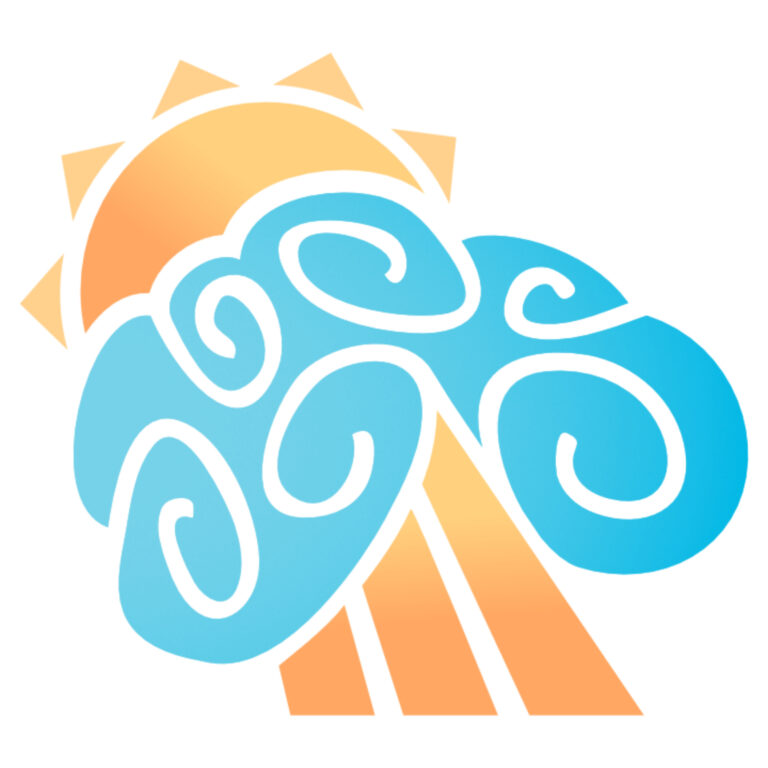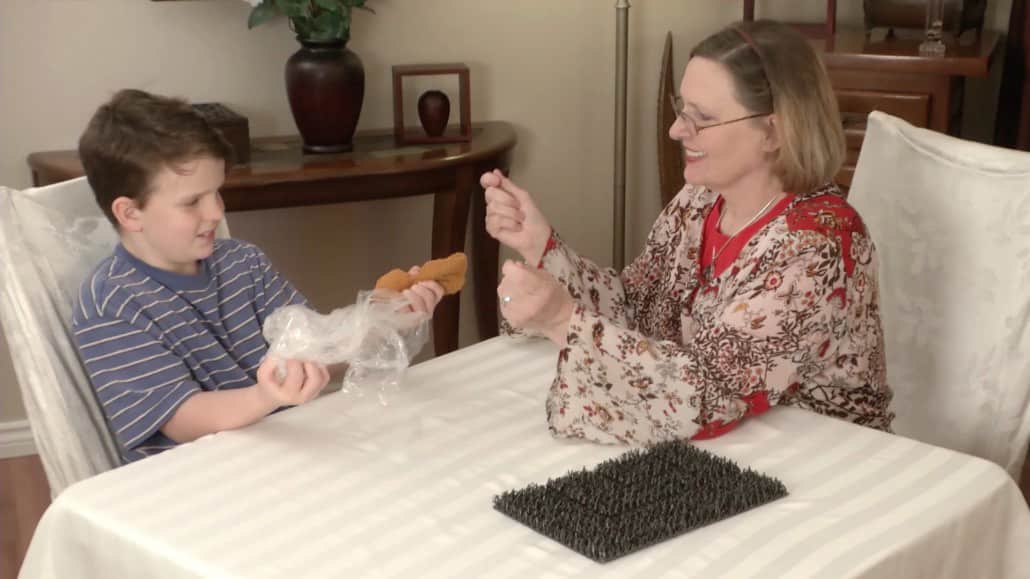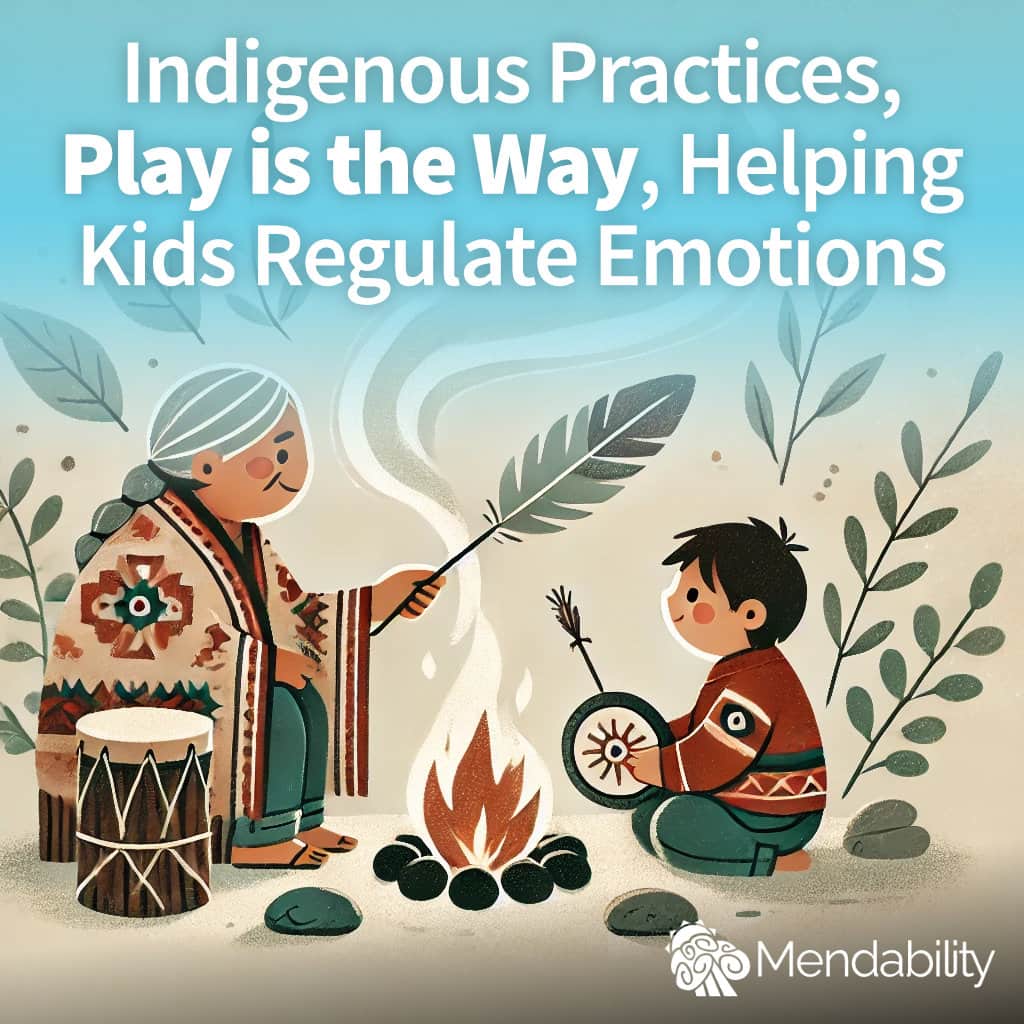Every parent of a child with special needs knows the heartache of seeing their child struggle to feel comfortable in a world that often moves too fast. For these children, even simple tasks can be overwhelming, and emotional regulation can feel like a distant dream. What if integrating traditional wisdom, such as Indigenous practices, with play-based learning could unlock new ways to help children feel calmer and more connected? This episode of our podcast delves into these ideas with educator Leroy Slanzi, offering a fresh perspective on fostering emotional resilience and social skills in children with special needs.

Welcome to ‘The Happy Sensory Corner in Special Ed’ – the podcast where we explore the world of sensory enrichment and environmental enrichment in special education.
Through insightful discussions, interviews with experienced special education directors, and inspiring stories of resilience, we uncover the secrets to success in special education. Discover practical strategies, sensory enrichment protocols, and evidence-based practices that can transform the lives of special education students and educators.
Anneke Elmhirst is a relationship coach and former behavior analyst. With her we discuss:
– Ethical concerns with ABA practices and how they can impact neurodivergent children.
– The importance of respect and self-regulation in building healthier relationships between neurodivergent children and their parents.
– How parent education can foster acceptance and long-term well-being for children with special needs.
Anneke shares her journey from behavior analysis to relationship coaching, revealing why she left the ABA field due to ethical concerns and how she now empowers families and individuals to thrive authentically.
Claudie explains the brain’s role in self-regulation and the neurobiology behind stress reduction in children with sensory challenges. She also shares sensory enrichment strategies, including specific games to support emotional regulation and build trust between parents and children.
Episode Highlights
@3:37 – Anneke explains why she transitioned from ABA to coaching, citing the need for more ethical, child-centered practices.
@7:28 – Anneke describes her concerns about the societal pressures in ABA, including an anecdote about pushing children toward “age-appropriate” recreational skills that might not bring them joy.
@13:33 – Anneke challenges the idea that parents must “change” their children to fit societal norms and highlights the importance of fostering acceptance.
@15:23 – Anneke shares practical steps for educating parents about behaviors like stimming and how to help them reframe these actions positively.
@24:06 – Claudie explains how serotonin imbalances contribute to anxiety in nonverbal children and describes sensory enrichment activities, like massage and music, that help children self-regulate.
@38:11 – Claudie shares a touching story about how offering alternatives for a child’s unsafe stimming behavior led to mutual respect between the child and parent.
@38:51 – Anneke highlights why respect is a two-way street and shares how children often communicate respect in unique ways.
@40:52 – Anneke discusses how teaching children to respect boundaries fosters emotional growth and independence.

What Smudging and Sensory Rituals Teach Us About Emotional Regulation
Leroy Slanzi, a seasoned educator working in Indigenous schools, shares how the daily practice of smudging—a ritual involving the burning of sage—has a tangible impact on students’ well-being. This simple act of using sage smoke to cleanse classrooms and individuals not only respects cultural traditions but also creates a calm, grounded environment where children feel safe.
“Smudging isn’t just tradition; it’s a way to soothe and center children each day.” — Leroy Slanzi
Research supports the benefits of incorporating nature-based practices like smudging into everyday routines. The calming effects of pleasant scents, like sage, have been shown to increase dopamine levels in the brain, which can improve focus and reduce anxiety .
Claudie Pomares, our Chief Scientist, explains that this dopamine boost can last for up to an hour and a half, creating a window of time where children are more focused and better able to process new information.
For parents at home, introducing simple sensory elements—like diffusing essential oils—could offer similar benefits .
How Indigenous Attachment Bonds Build Emotional Strength
Leroy emphasizes that one of the most significant strengths in Indigenous cultures is the strong sense of community and attachment bonds. Unlike many Western cultures where children are often encouraged to become independent at a young age, Indigenous communities maintain close connections between children, parents, and extended family members throughout life. This sense of belonging creates a secure foundation for children, helping them feel more emotionally stable.
“Indigenous kids don’t struggle with attachment like we see in mainstream schools.” — Leroy Slanzi
Attachment theory has long emphasized the importance of secure bonds for child development . For children with special needs, who may struggle with social interactions, the presence of consistent, caring adults can be a game-changer. Parents and educators can draw from this principle by prioritizing quality time and meaningful connection with children, even if it means small daily rituals like a bedtime story or a family meal.
Read more about how to strengthen family bonds with sensory routines in our webinar.
Play is the way: the natural path to learning and growth
Play is more than just fun—it’s a critical avenue for learning, especially for children with unique needs. Through play, children explore their world, develop new skills, and learn to understand themselves better. As [Guest’s Name] mentioned in our recent conversation,
“Play creates a space where children feel safe to take risks and try new things, without the fear of making mistakes.”
This approach makes play a natural fit for therapeutic contexts, too. Instead of traditional, rigid routines, play invites spontaneity, creativity, and joy, allowing children to progress at their own pace. It’s this balance of freedom and challenge that makes play so effective at fostering brain development.
Building connection and resilience through playful interactions
Beyond cognitive benefits, play serves as a vital tool for emotional regulation and connection. By engaging in play, children and their caregivers create moments of shared joy, building stronger bonds and mutual understanding. According to [Guest’s Name],
“When we play with our children, we’re saying, ‘I see you, I value you, and I’m here in this moment with you.’ That kind of connection can be transformative.”
Play helps children process their feelings and develop coping mechanisms, making it an essential part of navigating big emotions and stress. When play becomes a consistent part of family life, it strengthens not only the child’s resilience but also the entire family dynamic, making challenges feel more manageable.
A New Sensory Game: Building the Brain’s Bridges to Help Students Regulate Emotions
During the episode, Claudie and Leroy collaborate to create a game designed to strengthen the corpus callosum, the part of the brain that connects its two hemispheres. The game focuses on improving sensory integration by engaging both sides of the body and brain in a coordinated way. Here’s how the game works:
The child starts by holding two objects—one in each hand. For example, they might hold a cold, smooth rock in one hand and a warm, soft sock in the other. The contrasting sensations give the brain different types of information to process simultaneously.

“When you give each hand a different sensory experience, the brain has to work harder to integrate the information.” — Claudie Pomares
Leroy then adds a movement component, asking the child to raise their left hand or right foot while holding onto the objects. As the game progresses, the difficulty increases—perhaps the child is asked to lift the hand with the warm object while maintaining balance on one foot, or to switch the objects between hands. This encourages coordination and helps the brain to communicate more effectively between its two sides.
This type of game is ideal for kids with sensory processing challenges because it helps them become more aware of their body and how it moves through space. It also teaches them to process multiple sensory inputs at once, leading to improved focus and better self-regulation.
“By engaging both sides of the brain, you’re creating new pathways that can help with everything from balance to emotional control.” — Claudie Pomares
Parents can try this game at home using everyday objects, adapting it to their child’s comfort level. It’s a fun way to incorporate a brain-building exercise into playtime while helping children feel more in tune with their bodies and emotions. to heart, crafting experiences that let every child feel a little more at ease in their own skin.
Transcript
Sure! Here’s the complete transcript without timestamps and using only first names:
Kim
Welcome to season two of the Happy Sensory Corner podcast!
At Mendability, we want to help everyone, especially when they are vulnerable, to feel happier, more comfortable in their own skin, more confident, so that we can all journey together through life more happily.
And to do that, we activate the brain’s self-healing mechanisms with short hands-on games based on the neuroscience field of environmental enrichment.
And as our brains grow stronger and healthier, all of us benefit. And so we are experts in boosting brain development, but we are not experts in everything. For example, we’re not experts in education or eating, physical activity, advocacy, job training, recreation.
And so today, I’m excited to introduce you to Leroy Slanzi.
Leroy Slanzi is an educator with a distinguished 25-year career dedicated to transforming the educational landscape. His commitment to addressing the mental health challenges in schools is evident in his influential book Emotional Schools, The Looming Mental Health Crisis, and a Pathway Through It.
Leroy’s work goes beyond the classroom as he’s actively involved in professional development, guiding schools to foster emotional intelligence and mental well-being among students.
And his insights, drawn from years of experience, offer a valuable perspective on how education can evolve to support both students and educators in these challenging times.
Leroy, I’m so happy to have you on this podcast. Thank you for joining us.
Leroy
You know what? I appreciate you guys having me today. This is going to be a lot of fun.
Kim
And we’re also here with Claudie Pomares, the creator of Sensory Enrichment Therapy, which is this method of boosting brain development. She’s our Chief Science Officer at Mendability and our brain development expert. And I’m your host, Kim Pomares, CEO at Mendability.
And for those of you paying attention, yes, I have the same family name as Claudie, and that’s because she is my mom. Hi, mom!
Claudie
Hello, son!
Kim
So to start with, Leroy, tell us a little bit about what inspired you to get into special education or education. What is your why?
Leroy
Yeah, so… I think with education, it started probably like a lot of teachers. It started when I was a kid, as early as I can remember. I was the one kid in the cul-de-sac organizing hide-and-seek, kick-the-can, and road hockey games. I seemed to be the one leading the troops and offering suggestions of what we could do.
And then, as I grew up, I maintained that role. Eventually, in my teen years, I started teaching swimming lessons. After that, I went to college and went right into teaching. It’s been a passion of mine since as far back as I can remember.
I’m 50 now, and Special Education hit me once I got out of the teacher program. I got out of the education program at a time when you’d apply for a job, and 20 other people would be applying too. It was a competition. Nowadays, some of your audience can attest to it—if they work in schools as principals or vice-principals, it’s hard to find teachers.
There’s a teacher shortage across the country, the United States, and Canada. But back then, I took any job I could get, and ironically, I took a job in a foundation skills program. So 25 years ago, school districts were still streaming kids, and this was before they really understood when to assess and when not to assess.
I got kids with behavioral issues, Down syndrome, severe autism, learning disabilities… Back then, those kids were just labeled in this gray area.
In my first three years of teaching, I had the “breakfast club” of kids, and nowadays, as a principal, I would never design a class like that because I believe kids should be included in regular classes and get the support they need.
But I developed a passion for those kids. They were the underdogs. Special Ed became something I really needed as an educator. After three years, I left that school, moved to the Okanagan, started a Master’s in Special Ed, and became a Special Ed teacher in high school.
I was only a Special Ed teacher for about three years before I became a vice-principal, then a principal, but I’ve always kept Special Ed under my administrative umbrella. I just love working with vulnerable kids.
My specialty is in learning disabilities. I did my thesis on it—working with kids with mild intellectual disabilities, learning disabilities, ADHD, and behavioral challenges. That’s my stream and where I’m best.
Kim
How do you go from there to writing a book about emotional schools and mental health crises?
Leroy
I’ve been teaching for 25 years, and I’ve always enjoyed writing. I never dove into writing a book until later in life because I was also coaching basketball and swimming.
As my kids became teenagers, I started writing more, and I ended up leaving the school district to work in an Indigenous school. It felt like the right path in terms of understanding Indigenous culture and being immersed in it.
I wrote Emotional Schools and a book on breathing strategies called And Breathe, tied to the Play is the Way program. It’s about 50 breathing strategies, like “hot chocolate breathing” and “rocket ship breathing,” aimed at elementary school students.
Since finishing Emotional Schools, I’ve been writing another book on leadership and credentials—whether having a degree makes someone a good leader. I’m arguing that just because you have letters behind your name doesn’t mean you’re naturally a good leader.
And I’ve got a third book on attachment, which ties into Emotional Schools. That’s where I’m at now—writing and reflecting on these topics.
Kim
I think you’ve given us so many directions to go with this podcast. You mentioned breathing earlier. Have you ever considered introducing fragrances or scents with breathing exercises?
Leroy
At the school district, all buildings were scent-free. But now that I’m at an Indigenous school, we do smudging every morning. A student walks around the school smudging the walls and classrooms with sage and an eagle feather.
It’s a beautiful way to start the day. Smudging ties into the emotional intelligence work we do with Play is the Way. I’m not religious, but I do embrace spirituality, and smudging provides a way to breathe and soothe ourselves. It’s all about sensory experiences—smells, touches, and sounds that ground us.
Kim
Claudie, could you share why fragrance helps with concentration and setting the mood?
Claudie
Of course. Smell is a powerful sensory input. When we smell something pleasant, our brains release dopamine—a neurotransmitter that controls movement, motivation, memory, and mood.
Studies show that pleasant smells increase dopamine by 100%, and when combined with other sensory inputs like music, it can increase dopamine by 400%. This effect lasts for about an hour to an hour and a half, helping kids focus and concentrate.
We often work with special needs classrooms, and we’ve created something called the “Mendability Minute” to help teachers engage kids through smell and sensory experiences.
Leroy
I love that. I think the way smudging is done, with conscious engagement, makes it even more powerful. I’m definitely going to incorporate some of these ideas into our program.
Kim
Leroy, do you have a game from Play is the Way that we could enhance with Claudie’s sensory elements?
Leroy
There’s a game called Dead Ants where kids lie on their backs, and I call out movements—like “raise your right arm, left leg,” etc. To make it harder, I switch the instructions, so “right” becomes “left.”
We could add sensory elements like having the kids hold different objects in their hands—one side holding something cold and heavy, the other something soft and light. This would engage the brain while they play.
Claudie
Exactly! Even if they don’t realize what they’re holding, their brains will process the sensory information. It’s a great way to activate both sides of the brain and promote connections across different pathways.
Kim
That sounds like so much fun! Leroy, thank you for all your insights today. I’m sure parents listening are excited to hear more. Any last words?
Leroy
If any teachers are listening, I’ll be in Calgary on September 27th for a Play is the Way workshop. You can find more info at playstheway.ca or email me directly. Emotional intelligence is the foundation of academic success, and I hope to see you there.
Kim
Thank you, Leroy! And to our audience, we’ll see you next week.
Claudie
Bye, everyone!
Leroy
Bye! Thanks again.

